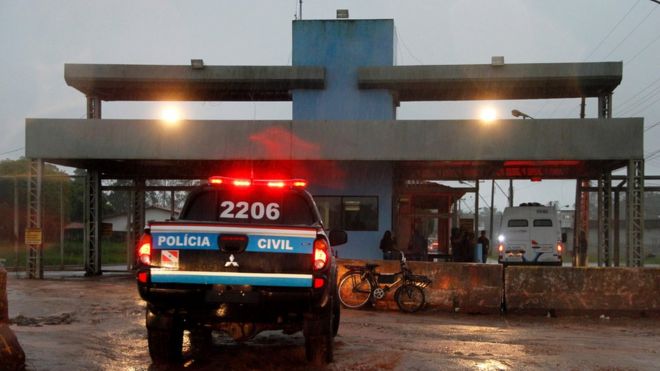Carmen Miranda “The Gang’s All Here”
We started class today watching a section of a musical with Carmen Miranda entitled “The Gang’s All Here.” In this section of the musical Miranda sings “The Lady in the Tutti Frutti Hat”. This scene is representative of how Brazil is seen by America, as producing agricultural exports, beautiful sexually available women. The Brazil that is depicted in this scene is highly romanticized, and as stereotypical “island life.” As this movie scene allowing us as a class to see how Carmen Miranda was seen in America. That she is a not Brazilian just as an “exotic island woman.” There is nothing in the video that is strictly Brazilian, only things that could be applied to many different countries.
History and Culture post: Abby “Michel Temer”
Abby read and discussed an New York Times article discussing a recent interview with Brazil’s president Michel Temer. Temper has a very low approval rating and that the Brazilian public is portraying their disapproval. One way the public has done this is during carnival one of the floats depicted Temer as a vampire. Temer is going to run for president again even though he is being impeached. These efforts to run again could lead to leanly in the corruption charges against Temer. After Abby’s talk it lead to a discussion of how political campaigns occur in Brazil specifically that campaigns occur over a much shorter period of time and that adds can only be played on public TV stations and time is divided between parties and then by all the candidates. This is a stark contrast to the American system, with extremely long campaigns and number of ads being dependent on number of funds raised by candidates.
History and Culture post: Natalie “Three Killings”
Natalie informed the class about three killings that occurred over spring break in Brazil and their connection to a recent enacting of a constitutional provision by Temer. Temer gave the military the power to act against the people of Rio. Temer justifies this that it is to target gangs, however, it has been affecting more than just gang members it affects people in favelas, poor people of color. A councilwoman, Marielle Franco, who was responding to a recent death was killed along with her driver. It is believed that she was killed in relation the work she was doing in calling attention to the violence in Rio. There is some media attention that has reclassified this crime as some of the violence that Franco was fighting against. The government has used this to justify the increasing military presence in Rio, even though this is what Franco was fighting against her death is being spun by the media as such (see link below for more)
History and Culture post: Andrew “Yellow Fever”
Andrew discussed the current outbreak of yellow fever in Brazil. There has been a state of health emergency and a major effort to vaccinate the public. Once reason the outbreak is so large is because the health officials underestimated how much the virus would spread. The spread of mosquito borne diseases is greatly affected by transportation technology. The faster technology has allowed mosquitos to survive journeys to new areas which they would not survive the trip if the journey was longer.
“50 Years in 5: Brasilia” Dr. Holt
The study of the creation of Brasilia allows historians to raise the question how city planning can shape a society. Juscelino Kubitschek(JK) was the President of Brazil after Vargas he was a populist. JK created many developmental projects during his term which in order to fund he took out many IMF loans which in order to pay off lead to inflation. When JK was president there also was great fear around the spread of communism.
Book Presentation: Jordan The Modernist City: An Anthropological Critique of Brasilia
Jordan gives an overview of James Holston’s book allowing us as a class to have a further understanding of Brasilia and the goals of creating it. Jordan discussed the goals of creating Brasilia, that it was a way to make Brazil what it could be and how it fell short of that goal. When designing Brasilia, the architects attempted to create a classless society where everyone lives in harmony. That is a fairly lofty goal and they did not even come close to reaching that goal. Brasilia was successful in marking the creation of a new Brazil. The modern architecture of Brasilia was an attempt to change how the citizens live and interact with the city. Jordan has also updated The Modernist City’s Wikipedia page if you are interested in learning more.
Definitions:
Ades aegypti: the species of mosquito that spreads yellow fever along with dengue fever, chikungunya, zika fever, and mayaro.
Further reading:
“The Lady in the Tutti Frutti Hat” video: https://www.youtube.com/watch?v=TLsTUN1wVrc
“Neoliberal vampire” Paraíso de Tuiuti float: https://youtu.be/g8nj8hiTF4A?t=2m19s
On Brazilian Campaign ads: https://www.economist.com/news/americas/21611070-political-airtime-tv-follows-strict-schedule-will-it-matter-tightly-scripted-telenovela
Police Militarization: https://www.wola.org/analysis/police-militarization-similarities-between-ferguson-and-brazil/
Effects of Marielle Franco’s death: https://www.nytimes.com/2018/03/28/opinion/marielle-franco-brazil-activist-death.html
WHO report on Yellow Fever outbreak: http://www.who.int/csr/don/27-february-2018-yellow-fever-brazil/en/
The Modernist City: https://en.wikipedia.org/wiki/The_Modernist_City

/i.s3.glbimg.com/v1/AUTH_59edd422c0c84a879bd37670ae4f538a/internal_photos/bs/2018/9/K/qQLhEcQgy1bU4hApKaMg/jair-bolsonaro.jpg)






